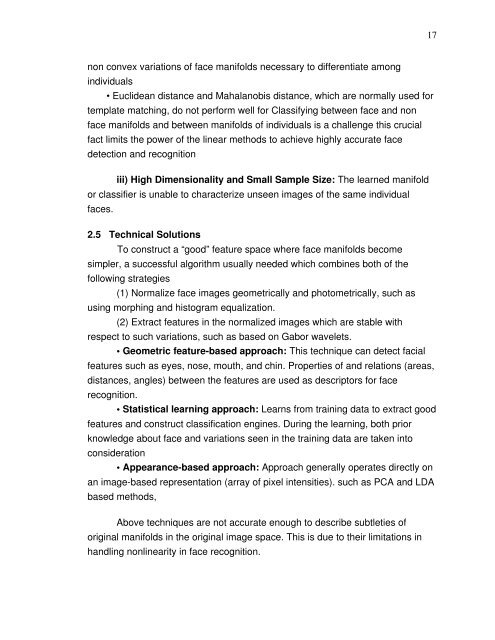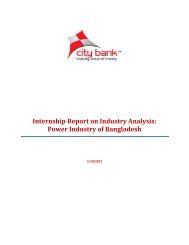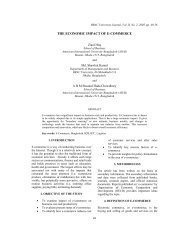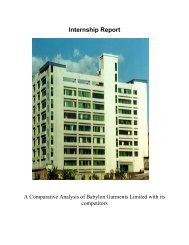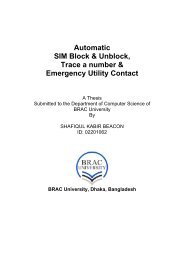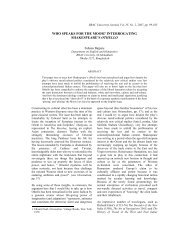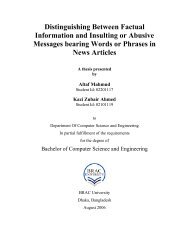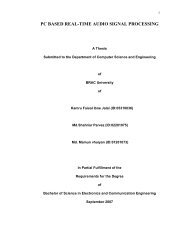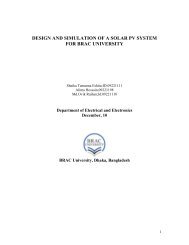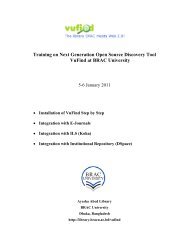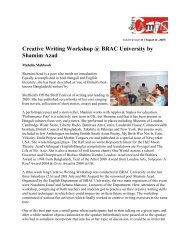LITERATURE SURVEY OF AUTOMATIC FACE RECOGNITION ...
LITERATURE SURVEY OF AUTOMATIC FACE RECOGNITION ...
LITERATURE SURVEY OF AUTOMATIC FACE RECOGNITION ...
Create successful ePaper yourself
Turn your PDF publications into a flip-book with our unique Google optimized e-Paper software.
non convex variations of face manifolds necessary to differentiate among<br />
individuals<br />
• Euclidean distance and Mahalanobis distance, which are normally used for<br />
template matching, do not perform well for Classifying between face and non<br />
face manifolds and between manifolds of individuals is a challenge this crucial<br />
fact limits the power of the linear methods to achieve highly accurate face<br />
detection and recognition<br />
iii) High Dimensionality and Small Sample Size: The learned manifold<br />
or classifier is unable to characterize unseen images of the same individual<br />
faces.<br />
2.5 Technical Solutions<br />
To construct a “good” feature space where face manifolds become<br />
simpler, a successful algorithm usually needed which combines both of the<br />
following strategies<br />
(1) Normalize face images geometrically and photometrically, such as<br />
using morphing and histogram equalization.<br />
(2) Extract features in the normalized images which are stable with<br />
respect to such variations, such as based on Gabor wavelets.<br />
• Geometric featurebased approach: This technique can detect facial<br />
features such as eyes, nose, mouth, and chin. Properties of and relations (areas,<br />
distances, angles) between the features are used as descriptors for face<br />
recognition.<br />
• Statistical learning approach: Learns from training data to extract good<br />
features and construct classification engines. During the learning, both prior<br />
knowledge about face and variations seen in the training data are taken into<br />
consideration<br />
• Appearancebased approach: Approach generally operates directly on<br />
an imagebased representation (array of pixel intensities). such as PCA and LDA<br />
based methods,<br />
Above techniques are not accurate enough to describe subtleties of<br />
original manifolds in the original image space. This is due to their limitations in<br />
handling nonlinearity in face recognition.<br />
17


